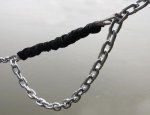Crinan12
Well-Known Member
Hi folks I am just sorting out an anchor snubber for my boat
I was going to get a 10 metre bit of 3 strand rope with a chain hook but then I noticed these contraptions on the jimmy green site
They are more expensive £60ish. Do they do the same job as a length of stretchy rope ?
What should I be using ?
Thanks
P.s 28ft 4 tonne yacht

I was going to get a 10 metre bit of 3 strand rope with a chain hook but then I noticed these contraptions on the jimmy green site
They are more expensive £60ish. Do they do the same job as a length of stretchy rope ?
What should I be using ?
Thanks
P.s 28ft 4 tonne yacht


